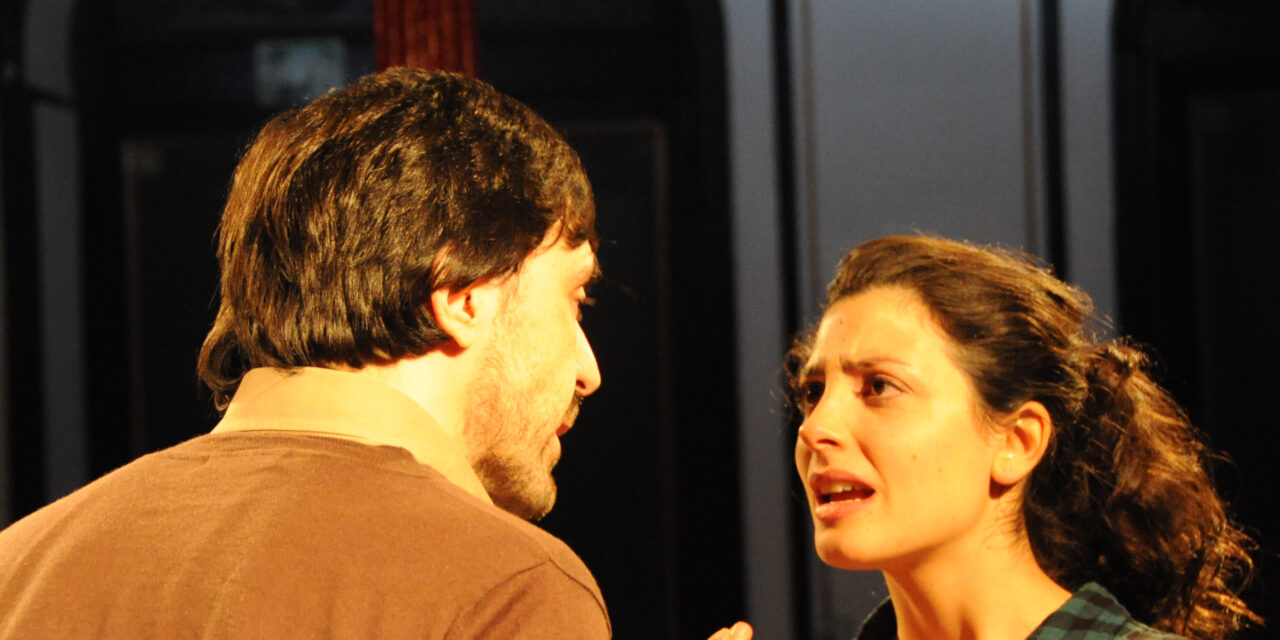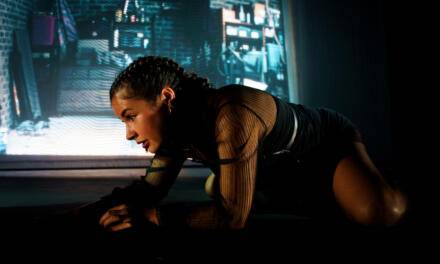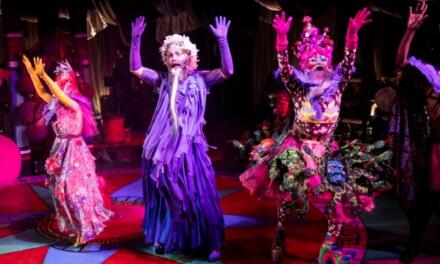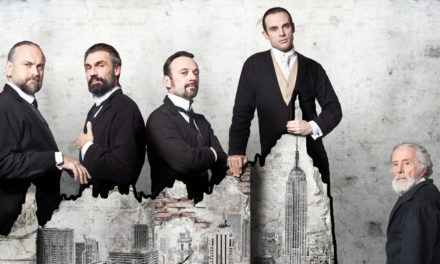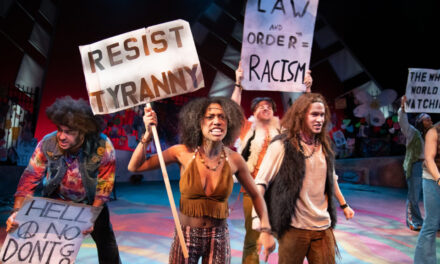It has been a decade since Miguel del Arco—now one of Spain’s most admired directors— burst onto the Madrid theatre scene with an adaptation of Pirandello’s Six Characters in Search of an Author rooted in contemporary Spain. First staged in the midst of la crisis, Spain’s devastating economic recession, La función por hacer (English title: The Play to be Done) has enjoyed acclaimed runs in five different venues. Del Arco had worked as an actor in musical theatre, including a distinctive Javert in Les Miserables, and there is a choreography to the action of The Play to be Done, a rhythm in the delivery of the lines that gives the piece a sinewy musicality that evokes Beckett. There is a leanness to the adaptation signed by del Arco and Aitor Tejada, an economy that evokes Daniel Veronese’s Chekhov adaptations rather than earlier Spanish translations of Pirandello’s 1921 play. The play is here condensed: the visiting characters are four instead of six and they interrupt the performance of a new work rather than a rehearsal. The performance concerns a loving couple embodied by Cristóbal Suárez (Actor) and Miriam Montilla (Actress) whose relationship comes under some tension when he, an artist, shows her a painting that he has completed of her that she finds distasteful. Their bickering is disturbed by “the characters,” two brothers and their wives: Elder Brother (Israel Elejalde) is married to a woman known as “Mother” (Manuela Paso) who is grieving the death of her child. She has taken it upon herself to mother the baby of her husband’s Younger Brother (Raúl Prieto) and his Wife (Bárbara Lennie). (In the Spanish mujer can mean both woman and wife.) None of the six characters in the piece are given individual names.
The Actor wants to work with the foursome to create a new piece while the Actress is less than enthused by the new project. She doesn’t feel there is anything new here; their tale is one that has, in her view, been done to death on television. Indeed, at one moment, she suspects there is a hidden camera in the auditorium and that they are now part of a terrible reality television programme. He, however, senses the urgency in what is evolving in front of him. For her, however, truth is always relative and truth in theatre is always just a matter of appearance—one of the numerous references in the piece to Calderón de la Barca’s Life is a Dream. Elder Brother has a different view: audiences come to the theatre because they know that the problem of “to be or not to be” will never be resolved. Art is an ongoing attempt to address that question.
Watching the production, I wonder if del Arco is offering a critical commentary on poverty porn—works where the lives of the vulnerable are put up for public middle-class consumption without any due ethical consideration. Domestic tensions prevail: Elder Brother attempts to buy off his Younger Brother, the Wife and the Elder Brother have been involved in a clandestine affair, the Mother is struggling emotionally with to cope with the death of her child. The fact that the Younger Brother takes his sibling’s money so readily annoys his wife. “Do you think I like to live off his charity?” Younger Brother retorts. The couple are victims of Spain’s emotional crisis that produced a public deficit of 11.2% of GCP in 2009 with unemployment rising to 20% by the beginning of 2010. Unemployed and homeless, Younger Brother and his wife move in with his elder sibling. On losing the baby, the Mother is hospitalised. The issue of whose lives are up for exploitation, what agency means and how theatre might repackage life as performance is repeatedly debated. Del Arco fashions a reflection on theatre and its conventions, its narratives and its limits. The Actor talks of the importance of synthesis and simplification, “eliminating unnecessary details.” The Actress and the Wife argue about the role of the audience and whether those spectators gathered in the theatre really want to witness the (mis)adventures of the foursome. The Actor reflects on Thomas Aquinas’s view that beauty in art is “integrity, proportion, and clarity.” But the Actress refutes his criteria when she sees his cubist portrait. There is something of Yasmina Reza’s Art in the vigorous debate that the pair engage in over his portrait—del Arco went on to stage Art in 2017. Beauty, the audience is reminded, is always in the eye of the beholder and histories are retold as literature by those who take it upon themselves to narrativize the past.
Method acting comes under the scalpel too as the concept of what constitutes the real is debated. “Life,” the Elder Brother observes, “is full of absurdities, but they don’t need to appear plausible because they are true…. You work hard so that what isn’t truthful appears so.” “You will be real when we interpret you’, the Actor tells the characters. “Perhaps more real but less truthful”, the Elder Brother states. The passing of time, the people we become, how we relate to who we once were, is central to the piece. The relationship between truth and fiction and life and performance are shown to be fluid and unstable. Nothing is quite what it seems in the play and nothing, not even an onstage death, can be posited as real.
The proscenium stage of the Pavón theatre has been reconfigured to place the audience on three sides of the action. The actors step across and into the audience and repeatedly disrupt the fourth wall. The performance style may begin in thrall to the naturalism of method acting but it moves into something far more disarming and physical as the action progresses. Bárbara Lennie’s Wife bounces across the stage, a bundle of manic energy and passion with a heightened language that recalls that of the Bride in Lorca’s Blood Wedding. She cuts through the auditorium like a knife. She confronts her husband, his Elder Brother and the Actor. She resents a vision of theatre where the Actor decides what can and cannot be represented. She won’t keep quiet and her urgency contaminates the action, lending it the pressure and resolve that balances Manuela Paso’s Mother, who clutches the baby to her with a desperation that proves painful to observe. It is never clear if the baby is a ghost, a prop or a reality. And the piece is all the more disarming for this ambiguity. Miriam Montilla’s Actress often watches the action from the back of the stage, interrupting the characters in the hope of moving them on but without success. Raúl Prieto’s Younger Brother tries on numerous occasions to leave the auditorium, but he appears to be trapped in the room, like the dinner guests of Buñuel’s The Exterminating Angel. In contrast to his fluent and articulate Elder Brother, he distrusts words, doesn’t like dramas and wants a quiet life. He lashes out in frustration, at one point attempting to hit his Wife while the other characters look on in horror. At times he paces the stage like as a caged animal; his tracksuit bottoms and vest point to a man used to working-out who is now destined to wander desperately in an interior space where he feels painfully ill at ease.
There’s palpable electricity between the Elder Brother and the Wife whenever they are in close proximity. Israel Elejalde excels in displaying the painful tension between duty and passion. Bárbara Lennie, now one of the most in-demand actresses of her generation, cannot hide the longing she feels for the Elder Brother. Her voice rings out, resonant and weighty, like an avenging Clytemnestra. She confronts him on his version of the story with a need to tell her version of their shared past. As the action is refashioned by the Actor, it becomes clear that none of the characters is happy with the version that is produced. Desire, the production shows us, always exceeds the means through which it can be satisfied.
Del Arco endows the piece with a resolutely twenty-first-century sensibility. Costumes feel contemporary, real and lived in. The Actor and Actress appear to dance across the stage as they play out their argument in physical terms. The characters who intrude on the action step into the theatre cautiously, catching both the Actor and Actress and audience unawares. They come in search of an author but the Actor reminds them that there is no author here: in the twenty-first- century theatre, the roles of author, director and actor appear to have merged in ways that the characters find difficult to come to terms with. The Actor seeks to take on the role of the author but the Actress reminds him that they have worked on the text together. Control is often in male hands—the Actor working with the Elder Brother while the women look on as their lives are “packaged” and their agency removed. The interruptions repeatedly disrupt the fourth wall. Just as it looks as if the action may settle into a pattern, one of the characters spills into the audience to create a new sphere of action. There is no safe space in the auditorium, no place where an audience member can be sure that the action will not disrupt their anonymity.
Creating its own scenography across the actors’ bodies with just a couple of chairs and an easel, this is a production where a world of intrigue is created through the unexpected encounters that the narrative initiates. The Play to be Done provides a twenty-first-century jazz riff on Pirandello’s celebrated play that feels urgent and socially relevant, examining the politics of theatre in a society where anything, even the most intimate of traumas, can be bought and sold for human consumption.
La función por hacer (The Play to be Done) is at the Pavón Teatro Kamikaze until 26 July 2019.

La función por hacer (The Play to be Done). Poster.
This post was written by the author in their personal capacity.The opinions expressed in this article are the author’s own and do not reflect the view of The Theatre Times, their staff or collaborators.
This post was written by Maria Delgado.
The views expressed here belong to the author and do not necessarily reflect our views and opinions.

